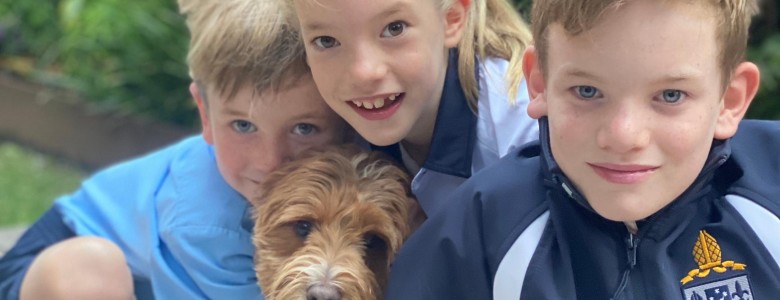Improving outcomes for premature babies with chronic lung disease

Clementine and Felix are your typical nine-year-olds who enjoy sport and catching up with their school mates over a game of netball or cricket.
But their mum, Georgia Widdup, said while her twins were fit and healthy today their start in life was marred by illness.
Despite their rocky beginnings, the twins have played a key role in helping thousands of other babies benefit from the research they were enrolled in just days after birth.
They were born at 27 weeks, with Felix and Clementine weighing just 888g and 1019g, respectively.

For Georgia and her husband, it was an extremely overwhelming and stressful time. "I felt a real mixture of shock, anxiety and fear for what challenges they might face ahead," she said.
Not only were the twins born extremely prematurely, which reduces a baby's risk of survival to 80 per cent, but Clementine developed a lung disease called bronchopulmonary dysplasia (BPD).
BPD is a breathing disorder where an infant's lungs become irritated and do not develop normally. Because the lungs are not fully developed in premature babies they are at a higher risk.
BPD occurs when a baby has been on oxygen or on a breathing machine for a long time, which can damage the lungs, and cause inflammation and scarring. As a result, the lungs do not develop as they should. Most infants get better with few long-term health problems, but some need intensive medical care.
"During the time that our twins were in NICU, we were approached about a number of research projects and trials," Georgia said. "We were told about the OPTIMIST-A trial when Clementine was a matter of hours old and immediately agreed to participate, even though I still had my own health issues. I would do the same again today."
The trial was testing a new approach pioneered by Australian researchers to help improve treatments for premature infants with BPD.
The study was co-led by Murdoch Children's Research Institute (MCRI) Honorary Professors including Peter Dargaville, Research Fellow at the Menzies Institute for Medical Research and Staff Specialist at Royal Hobart Hospital; Professor Peter Davis, Consultant Neonatologist at the Royal Women's Hospital and Dr Omar Kamlin, Consultant Neonatal Paediatrician at the Royal Women's Hospital.
The multi-centre clinical trial aimed to improve the current standard of care for premature infants and reduce BPD.
The study involved 485 premature babies from around the world who were enrolled in the first hours of life. The trial tested the new 'Hobart' method for administering a drug called surfactant to the airways via a flexible tube, developed by Professor Dargaville and his team at the Royal Hobart Hospital in 2009, compared to the standard approach to care.
Professor Carlin's team in MCRI's Clinical Epidemiology and Biostatistics Unit (CEBU) contributed vital statistical expertise to the trial. He said CEBU's work was fundamentally important across many clinical and health problems because almost all modern research involving patients and children relied heavily on statistical methods to design high-quality studies and to interpret the resulting data appropriately.
Professor Carlin said, "This trial demonstrates the value of a dedicated team working over a long period of time on a systematic effort to evaluate the benefits of a new clinical approach in difficult circumstances. The results suggest that five or more in every 100 of these premature babies may benefit from the new treatment, providing enormous relief for each of those families."
CEBU senior biostatistician Francesca Orsini was also closely involved in many aspects of the trial, from design decisions through to the final analyses, which needed to take account of the characteristics of the babies recruited and allow for variation in outcomes across more than 50 hospitals internationally.
Professor Dargaville said, "around 0.6 per cent of all babies worldwide are born before 30 weeks gestation and are at high risk of breathing difficulty related to immature lungs, including a lack of surfactant, a natural substance that lines the airspaces and makes breathing easier."
Surfactant is regularly given to preterm infants as a medication, but the previous delivery method was invasive, requiring the passage of a large breathing tube into the windpipe.
"The Hobart method involves placing a narrow tube in the windpipe to deliver surfactant, which then disperses deeply into the lung as the baby breathes," Professor Dargaville said.
"The technique is relatively easy to learn and has been used in hundreds of neonatal units worldwide, including those participating in the OPTIMIST-A trial."
Georgia said nine years after Clementine took part in the trial she was a picture of health.
"I really am completely amazed and grateful for the healthy, normal life that Clementine leads," she said. "I am quite sure that this is in no small part due to the phenomenal care she received from all her clinicians and the research teams."



